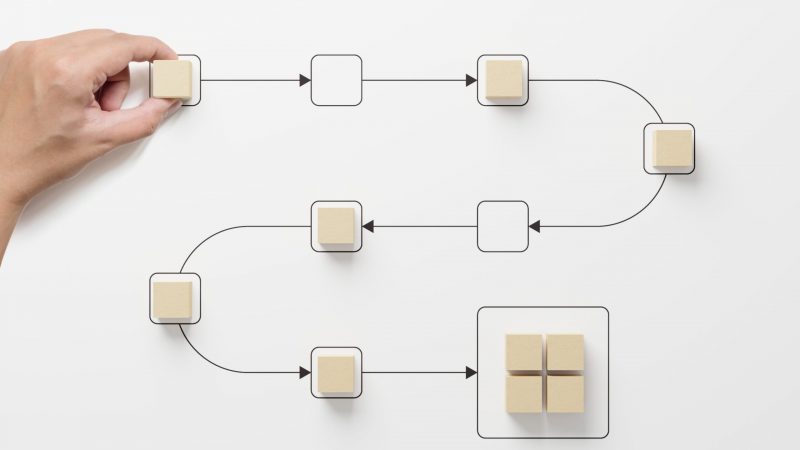There are many different types and categories of budgeting processes. During an economic downturn, when many businesses are rethinking their overall business processes, it might be a good time to go “back to the basics” and see if there are ways to improve the budgeting process itself.
The foundation of budgeting starts with two types: Top down and bottom up. Let’s take a look at the differences and pros and cons of both in order to decide what is best for a company during an economic downturn.
Top Down Budgeting
Top-down budgeting is a method of budget preparation that starts with a global or overall budget and then allocates specific amounts to different departments, programs, or initiatives. This approach focuses on allocating resources from the highest level of an organization down to the lower levels, based on the strategic priorities and goals set by senior management. Some would call it the traditional way of budgeting, as in the classic hierarchical business model, executives and those highest up make the important decisions and pass it down to their subordinates.
Top Down budgeting method
Top-down budgeting is a method of budget preparation where a global or overall budget is established at the top level of an organization and then specific amounts are allocated to lower levels based on the priorities set by senior management. In simple terms, it works as follows:
- Setting goals and objectives: The first step is to determine the organization’s overall goals and objectives, which will guide the budget preparation process.
- Allocating funds: The next step is to allocate funds to different departments, programs, or initiatives based on the priorities set by senior management.
- Developing detailed budgets: Based on the allocated funds, each department, program, or initiative develops its own detailed budget, taking into account their specific needs and requirements.
- Monitoring and adjusting: The budget is then monitored and adjusted as needed throughout the year to ensure that resources are being used effectively and efficiently to meet the organization’s goals and objectives.
The biggest advantage of top-down budgeting is that it ensures that resources are aligned with the organization’s overall goals and priorities, and that the budget is prepared in a systematic and consistent manner.
Bottom up budgeting
Bottom-up budgeting is a budget preparation method that starts with detailed cost estimates from individual departments or programs and aggregates them to develop a total budget for the organization. This approach involves gathering information and cost estimates from front-line workers and department managers, and then combining this information to form a comprehensive budget. The advantage of bottom-up budgeting is that it provides a more detailed and accurate understanding of the costs associated with individual programs and activities, but it can be time-consuming and may not always align with the overall goals and priorities set by senior management.
Bottom Up budgeting process
Bottom-up budgeting is a method of budget preparation where detailed cost estimates are gathered from individual departments or programs and combined to form a comprehensive budget for the organization. In simple terms, it works as follows:
- Gathering information: The first step is to gather information and cost estimates from front-line workers and department managers. This information should include the costs associated with programs, activities, and initiatives.
- Aggregating information: The gathered information is then combined and aggregated to form a comprehensive budget for the organization.
- Approval and adjustment: The budget is then reviewed and approved by senior management, who may make adjustments as needed to ensure that the budget aligns with the organization’s overall goals and priorities.
- Monitoring and adjusting: The budget is then monitored and adjusted as needed throughout the year to ensure that resources are being used effectively and efficiently to meet the organization’s goals and objectives.
The advantage of bottom-up budgeting is that it provides a more detailed and accurate understanding of the costs associated with individual programs and activities, and that front-line workers and department managers have a more active role in the budget preparation process.
Top-down budgeting Pros and Cons
Pros:
- Aligns resources with the organization’s overall goals and priorities.
- Ensures a consistent and systematic approach to budget preparation.
- Provides a high-level overview of the budget, making it easier to identify areas that need adjustment.
- Reduces the time and effort required to prepare detailed budgets.
Cons:
- May not accurately reflect the needs and requirements of individual departments or programs.
- Can be inflexible and slow to respond to changes in the organization’s environment.
- May lead to an over-reliance on senior management’s decisions, ignoring the insights and expertise of front-line workers and department managers.
Bottom-up budgeting Pros and Cons
Pros:
- Provides a more detailed and accurate understanding of the costs associated with individual programs and activities.
- Encourages front-line workers and department managers to be more active in the budget preparation process.
- Can lead to improved accountability and ownership of the budget at the departmental level.
- Allows for a more flexible and responsive approach to budget preparation.
Cons:
- Can be time-consuming and resource-intensive.
- May result in a lack of alignment with the organization’s overall goals and priorities.
- Can lead to disagreements and conflicts between departments over budget allocation.
- May not provide a clear overview of the budget, making it difficult to identify areas that need adjustment.
Which one is better during a recession?
While the answer depends on the specific circumstances of the company, in general, a bottom-up budgeting approach may be more suitable during a recession. It allows for a more detailed and accurate understanding of the costs associated with individual programs and activities, which can help companies make informed decisions about where to allocate their limited resources.
With a bottom-up approach, companies can focus on their most important initiatives and allocate resources accordingly, which can help them maintain their operations and minimize the impact of a recession on their business. Additionally, by involving front-line workers and department managers in the budget preparation process, companies can tap into their expertise and insights to make informed decisions about how to allocate resources in a way that will help them weather the economic storm.
That being said, many companies don’t have the time for bottom up budgeting due to reduced headcount or increased pressure from investors and stakeholders to produce fast and efficient results. Additionally, during an economic downturn, it may be difficult for regular employees to know the full picture or provide unbiased budgeting feedback.
Therefore, a top-down budgeting approach may also have its benefits during a recession, such as providing a clear and consistent approach to budget preparation and ensuring that resources are aligned with the organization’s overall goals and priorities. Ultimately, the most effective budgeting method during a recession will depend on the specific circumstances of the company and the broader economic environment. Companies may need to use a combination of both methods to achieve their goals.



